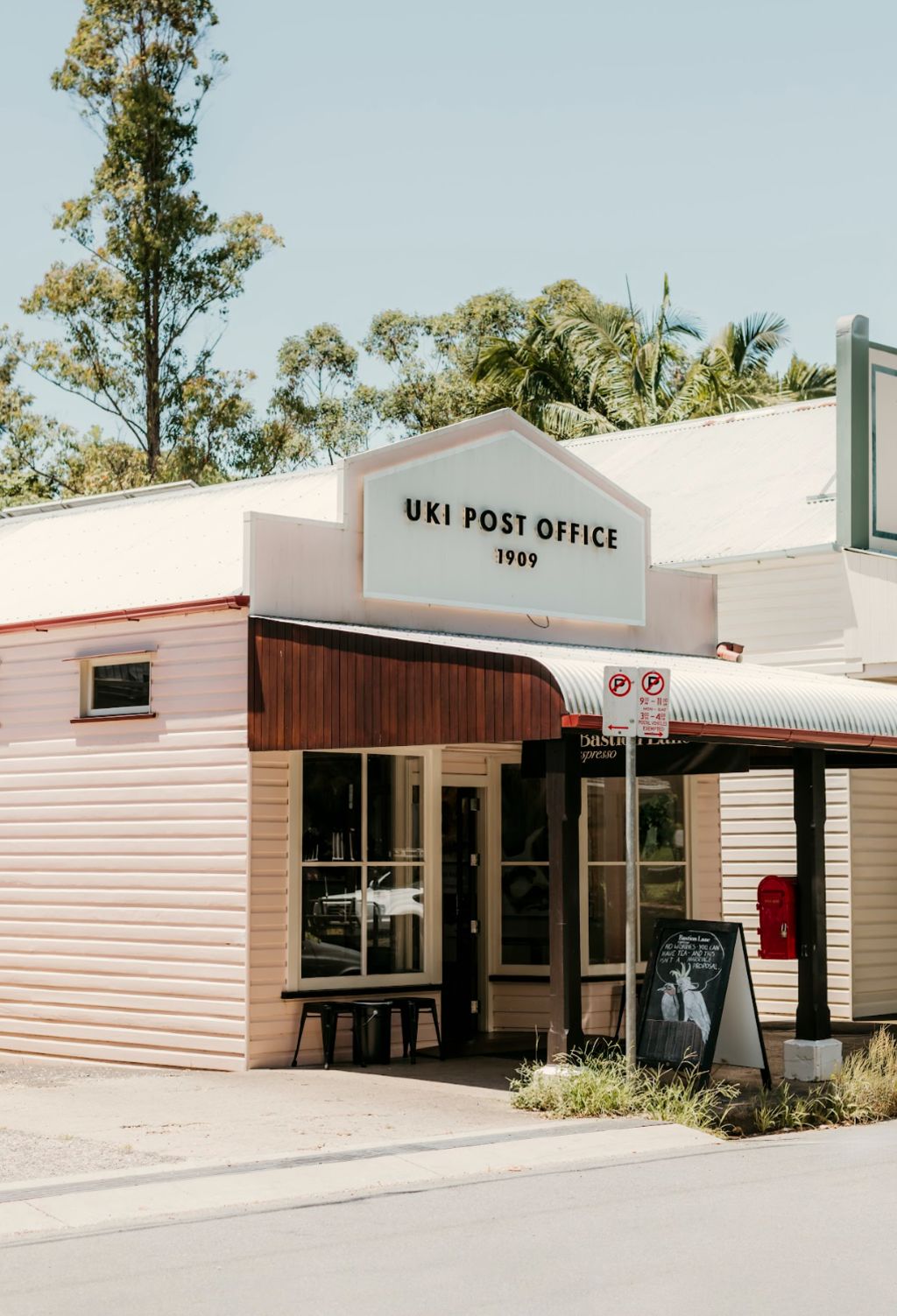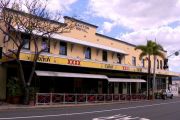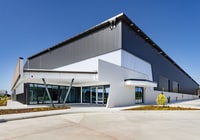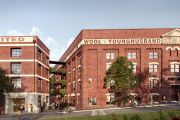
How Australia’s old post offices are finding new life
Once the heartbeat of Australian towns and city centres, post offices were where communities connected through letters, parcels, and a chat at the counter. Today, as digital communication reshapes how we connect, these sandstone and red-brick landmarks are being reimagined for a new era where history and opportunity meet.
No longer valued solely for their civic legacy, heritage post office buildings are now emerging as unexpected stars of the commercial property market. These solidly built, often centrally located assets attract premium prices as demand grows for character-rich, adaptable spaces. From grand city icons to small-town cornerstones, the increase in listings is proof of a rising investor appetite for properties that combine cultural cachet with commercial potential.
Across the country, these buildings are finding new life as hotels, cafes and design showrooms. Together, they make a compelling case for the growing trend of adaptive reuse.
Heritage building restoration meets luxury retail
When luxury appliance brand Gaggenau Australia was searching for a Sydney home, the former Surry Hills post office immediately stood out. “We wanted more than just a retail address,” says Aleks Efeian, then customer experience manager for Gaggenau Australia. “The building had heritage, presence and a strong connection to the creative heart of Sydney. Its original character aligned perfectly with Gaggenau’s values of craftsmanship and authenticity.”
The resulting flagship, Gaggenau Sydney, opened in late 2023, transforming the 260-square-metre heritage building into a refined design destination. “Repurposing a civic landmark into a design showroom felt right,” Efeian adds. “We’re a company that respects tradition while reinterpreting it through a modern lens.”
Early engagement with a heritage consultant helped the team navigate the design limitations without delaying construction. “That clarity allowed us to deliver a space that feels refined yet welcoming – one that connects the global Gaggenau story to Sydney’s own design culture,” he says.
From civic landmark to cafe: small-town transformations
In the Northern Rivers township of Uki, NSW, a heritage-listed 1909 post office now serves as a thriving community hub.
For Gary Wall, managing director of Bastion Lane Espresso, the building’s dual identity as both a historic landmark and working post office was irresistible. “I saw the potential in preserving its history while giving it a new purpose,” he says.
Wall’s restorative renovation project introduced a coffee roastery, espresso bar and art gallery into the existing post office, though not without challenges. “Getting local council approval was quite an adventure,” he laughs. “It involved five years, three development applications and about $220,000 in costs, not counting construction. We even had to prove our plans for a town of 800 wouldn’t cause traffic jams.”
The persistence paid off. Bastion Lane Espresso has become a tourism drawcard and social hub, even winning Australia’s Best Latte at the Royal Adelaide Coffee Show in 2025. “After some initial hesitation, the community really embraced it,” Wall says. “Now, we’re known as the town square – proof that business innovation and heritage can thrive together.”
Down south in Waratah, Tasmania, Madeleine Lawler and Andy Rhodes have turned the town’s 1913 post office into boutique accommodation. “We wanted an investment with meaning,” Lawler says. “We were immediately in awe of the property – the tin ceilings, sash windows and original post office counter.”
Their project, The Post Office Waratah, was guided by respect for history. “We confirmed the heritage council’s requirements early and made those features central to the design,” Rhodes says. “We removed modern add-ons and replaced them with fittings more in keeping with the era.”
Of course, no heritage building restoration comes without a challenge or two, and the old Waratah Post Office had been through several iterations already. “The biggest challenges were tied to the building’s age and all its past lives,” says Rhodes. “It’s been a post office, a bank, a library, a pottery studio and a home. That meant every wall hid surprises – patch-ups, old wiring, layers of workmanship from different eras. Sometimes a simple job would open a can of worms.”
But the work paid off, and not just for the building’s new owners. “We poured ourselves into this renovation,” says Lawler. “Seeing locals walk through the door and recognise pieces of their own history – the counter, the safe, the pressed tin – makes every late night worth it.”
Heritage meets hospitality
In Adelaide, the city’s General Post Office (GPO) has undergone one of Australia’s most ambitious heritage redevelopments, reborn as the Adelaide Marriott Hotel. The opening marked the brand’s first property in South Australia.
“Marriott and the development team were drawn to the GPO for its combination of location, legacy and connectivity,” says Paul Gallop, general manager of Adelaide Marriott. “Its civic prominence made it ideal for adaptive reuse.”
Approximately 85 per cent of the original structure, including the sandstone facade, the Grand Postal Hall and the heritage clocktower, has been preserved. Behind it, a 14-storey glass tower rises, “a contemporary jewellery box carefully inserted behind the sandstone frontage,” Gallop says.
“The project celebrates both the old and the new. Adaptive reuse allowed us to preserve the architecture, reduce environmental impact and deliver a distinct luxury experience that connects history and innovation.”
The Adelaide GPO redevelopment showcases just how well heritage preservation and commercial viability can align. The hotel’s interiors echo South Australia’s natural tones, creating seamless storytelling between the historic and modern spaces.
Restoring civic pride in Newcastle’s grand post office
On the NSW northern coastline, Newcastle’s 1890s post office building is being brought back from decades of neglect. Dr Jerry Schwartz, director of the Schwartz Family Company, purchased the property in 2018 after it had sat abandoned for more than 20 years.
According to the City of Newcastle, Schwartz made the purchase with a plan to invest more than $3.6 million transforming the site into a state-of-the-art conference centre, as well as retail shops, a cafe and an Aboriginal cultural centre.
“It’s a highly significant building that captures Newcastle’s prosperity from the coal-boom era,” Schwartz says. “When I lived here, it was the heart of the city.”
“Buildings like this need to live and evolve with the community,” he says. “My vision is to restore it to its glory and make it accessible to the public, with the involvement of the Awabakal people.”
The restoration has been technically complex. “It was left to the elements for years, but I’m committed to completing the work,” he says. “It’s such an impressive building. On these foundations, we can establish a new era for an old landmark.” The city gave the development application the green light in May this year.
Why post offices continue to deliver
What makes post offices so special in the context of heritage architecture in Australia? Beyond symmetry and sandstone, the buildings symbolise the human connections that once defined Australian towns and city centres.
As digital communication made the mailroom redundant, the adaptive reuse of the buildings, big or small, has given communities something just as valuable. Whether it’s a latte in Uki, a five-star suite in Adelaide, or a kitchen design showcase in Surry Hills, these reimagined spaces keep civic history alive while stimulating tourism and investment.
“Business innovation is key to survival, especially in small towns,” says Uki’s Gary Wall. But his observation applies just as much to cities. Across Australia, post offices are finding new voices, and once again, they’re delivering.










